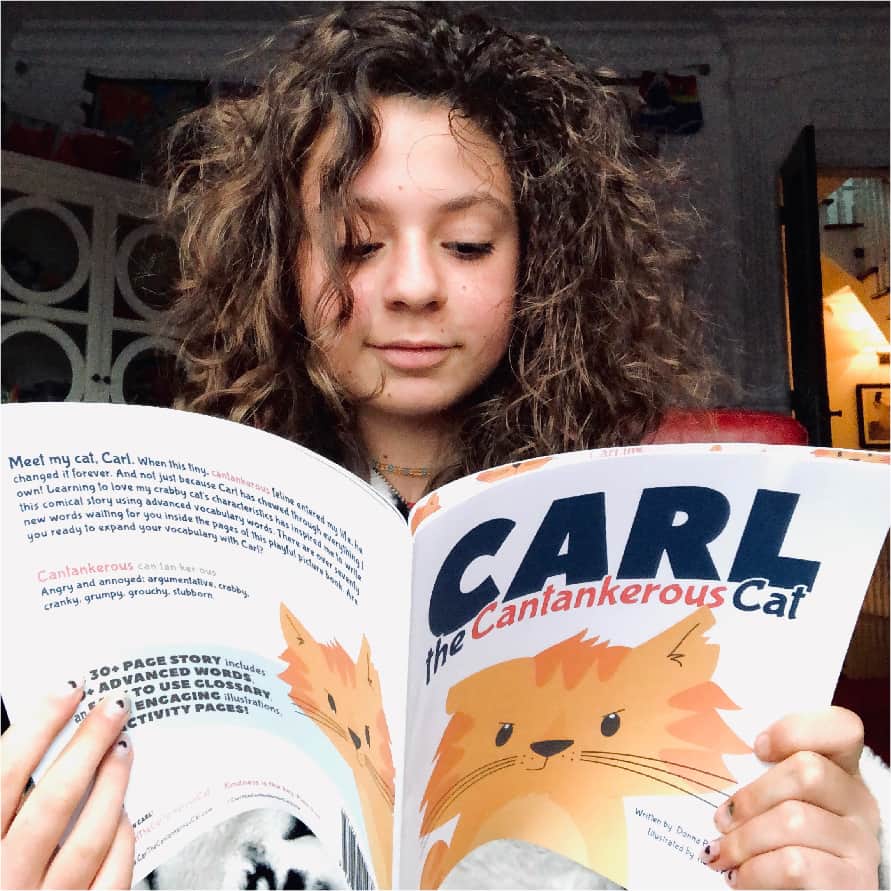Your Guide to Starting a Family Book Club Now
Start a family book club and turn reading into an enjoyable weekly ritual that brings everyone together, one chapter and conversation at a time.
Imagine each family member cozying up with the same book during the week, discovering new ideas on their own. Then, gather for a relaxed, once-a-week check-in to share thoughts, ask questions, and enjoy a shared read-aloud moment. It’s a beautiful way to connect, slow down, and celebrate storytelling as a family.
Grounded in Montessori-inspired values of independence, curiosity, and respectful discussion, this guide offers simple, age-appropriate steps to launch your own family book club, whether you’re reading with a 6-year-old or a tween.
💡📚💡📚💡
Our Favorite Family Book Club Picks:
The Little Prince
Wonder
Carl the Cantankerous Cat
Wild Cities
Pizza!: A Slice of History
It’s time to make reading together a tradition your family looks forward to all week.
What is a Family Book Club
A family book club is a wonderful way to cultivate a love for reading within your home.
It’s a shared reading experience within a family unit, where members come together to read and discuss a chosen book. It’s a way to foster a love for reading, encourage meaningful conversations, and strengthen family bonds.
Typically, family book clubs involve selecting a book, setting a reading schedule, and then gathering regularly to discuss the plot, characters, and themes. This shared literary adventure provides an opportunity for family members of different ages to connect over stories, share perspectives, and enjoy quality time together.

Organizing a family book club isn’t just a great way to get the family together; it’s a fantastic way to beat the summer brain drain and keep kids busy learning during holiday breaks.
Participating in this type of reading serves as a valuable vocabulary development activity, fostering confidence and enthusiasm in young readers.
How to Start a Family Book Club
Create your own book club at home by following these steps, transforming reading into a cherished tradition for your loved ones.
Explain to your family what a book club is.
Introducing the concept of a family book club is the crucial first step in fostering enthusiasm and understanding among your family members.
Begin by gathering everyone together and explaining what a family book club entails.
Emphasize that it’s a shared reading experience where each family member participates in reading the same book independently and together.
Be sure to highlight that there will be regular weekly meetings where everyone will gather to discuss the book and read together.

During this initial explanation, make it clear that the family book club is an opportunity for bonding, learning, and enjoying books together. Encourage open communication, allowing family members to express their thoughts, preferences, and expectations for the book club.
By setting the stage with a clear understanding of the family book club’s purpose and structure, you create a foundation for an engaging reading experience.
Choose a book for family book club.
Sounds pretty easy, right! But this step is important and requires attention!
Select books that cater to the whole family’s enjoyment. This ensures active participation in reading and the shared experience of embracing the story together, fostering inclusiveness and engagement for everyone.

A thriving family book club harnesses the power of choice, with members taking turns selecting a book for the entire family to read.
This rotation ensures that everyone can choose books aligned with their preferences, allowing each family member to read at their own level and explore topics that captivate their interest.
At the end of the this informational blog we’ve included a whole section dedicated to Popular Book Club Book Ideas for Your Family. You could also use list such as our 31 picture books for 5th graders to help you get your reading list started.
You could each spend time on Amazon looking for books, or go to your local bookstore or library together and see what you can find as a family.
Set reading goals and meeting expectations.
A successful family book club starts by making clear rules and setting reading goals.
As a family, set achievable goals, whether it’s completing one book a month or exploring different genres each week.

At the same time, define meeting expectations, and clarifying responsibilities like reading specific chapters or pages before each book club meeting.
Writing down these expectations ensures everyone actively contributes to discussions, fostering a shared and enjoyable reading experience.
Save the date for weekly family book club meetings.
Now it’s time to choose a day of the week and specific meeting time frame that works for everyone in your family. Treat this commitment with the same level of importance as you would a work meeting or a doctor’s appointment.

By establishing a regular schedule, you create a sense of routine and make the book club a priority for every family member. This dedicated time ensures that everyone can actively participate in discussions and engage in the shared reading experience without conflicting commitments.
Remember, consistency is key to fostering a strong reading culture in your family. Start by choosing a specific day and time for your book club meetings and mark it on the calendar.
Discuss the book and read together at weekly meetings.
The weekly book club meeting serves as a valuable opportunity for teachable moments as well as learning in disguise.
Explore the world of literature together by engaging in vibrant discussions during your book club meetings. Encourage participants to share their thoughts on characters, plot twists, and cherished moments.

Embrace the opportunity for questions and reflections, creating an environment that fosters critical thinking and enhances comprehension skills.
Additionally, make room for shared reading experiences, allowing family members to take turns reading passages aloud, strengthening listening skills and creating confident readers.
Complete independent reading assignments between meetings.
Engage in meaningful independent reading after each weekly family book club meeting.
Book club members will have to read a specific amount of pages between meetings. This means that you’re going to have to take some time to organize a timeline for reading that the family can follow, recognizing that it will vary depending on the type of book selected.

For chapter books, anticipate a 6-8 week duration to read together, while picture books, adored by elementary kids, may last only 1 to 2 meetings. Adjust the schedule to match the book, making it enjoyable and doable for everyone.
This self-guided exploration not only adds depth to the reading experience but also fosters independence and responsibility.
Take turns preparing a snack for weekly book club meetings.
Take turns among family members to prepare snacks or treats that align with the theme or setting of the book you’re reading. This rotating task not only brings in a creative element but also allows each member to express their connection to the story through culinary exploration.

Whether it’s baking cookies mentioned in a story, crafting a sandwich inspired by a character, or mixing up drinks straight from the pages of a novel, these thematic treats will not only satisfy your taste buds but also infuse an extra layer of excitement to your family book club.
Include book-related activities and games at weekly meetings.
Kickstart your family book club meeting with a book-themed trivia quiz that challenges everyone’s knowledge and understanding of the story.
Or take it a step further by encouraging participants to dress up as their favourite book characters, immersing the family in the whimsical world of literature.

To deepen the connection with the book, consider bringing the story to life by having each member act out their most cherished scenes or read their favourite quote from the book. This creative approach not only enhances comprehension but also cultivates a shared enthusiasm for the narrative.
💡 We love quotes! That’s why we’ve gathered inspiring Montessori words of wisdom just for you. You can check them out here:
77 Montessori Quotes to Fuel Your Child’s Success Story Now
35 Montessori Quotes for Inspiring Peace
By infusing family book club meetings with dynamic activities and games, you’ll create an immersive experience that not only enhances the joy of reading but also sparks endless inspiration and connection among family members.
Do a creative project after finishing a book.
After reading a book, get creative with your family. Each person can make a special book report by writing new endings, crafting poems, or drawing pictures based on the story.
These activities deepen your connection to the book and allow each family member to express their unique perspectives.

Whether it’s designing imaginative book covers or engaging in other creative post-reading activities, these projects make any book club an exciting space where the joy of reading meets artistic expression.
Through these vocabulary development activities, family members will foster a deeper appreciation for literature while celebrating their boundless imaginations.
Celebrate the completion of a book together.
Recognize the achievement of finishing a book by coming together as a family for a special celebration.
Consider organizing a mini party with treats and decorations inspired by the story, or opt for a more intimate family deep dive discussion to share thoughts and reflections on the book. You could even cap off the experience by watching the movie adaptation of the book together.

Celebrating the completion of a book not only fosters a sense of accomplishment but also instills the importance of acknowledging and taking pride in personal and collective achievements.
Through these moments of celebration, you’re not just finishing a book but also reinforcing the joy and satisfaction that come with reading, laying the foundation for a lasting love of books within your family.
As you can see the steps are pretty clear. Starting a family book club is definitely something you can implement at home.
Popular Book Club Book Ideas for Your Family
Here are a few wonderful books to get your at-home book club off the ground:
Family Book Club Books for Lower Elementary
🌕 The Little Prince by Antoine de Saint-Exupery
🤎 I am Lenny Brown by Dan Freedman
🍑 James and the Giant Peach by Roald Dahl
🍕 Pizza!: A Slice of History by Greg Pizzoli
👗 The Hundred Dresses by Eleanor Estes
Family Book Club Books for Upper Elementary
⭐️ Tuck Everlasting by Natalie Babbitt
🌹 Esperanza Rising by Pam Muñoz Ryan
👁️ Wonder by R. J. Palacio
🦍 The One and Only Ivan by Katherine Applegate
🌊 A Long Walk to Water by Linda Sue Park
Family Book Club Books for All Ages
🦒 Wild Cities by Ben Lerwill
🐇 The Miraculous Journey of Edward Tulane by Kate DiCamillo
😼 Carl the Cantankerous Cat by Donna Paul and Karen Patel
Benefits of Starting a Family Book Club
Starting a family book club brings a wealth of benefits. Here are just a few ways it can transform your family’s reading experience.
Shared Memories
Believe it or not, a family book club strengthens the familial bond. Whether through the laughter shared over a humorous passage or the deep discussions sparked by a thought-provoking chapter, the experience becomes a cornerstone of family history.

Promotes a Love of Learning
A good book club acts as an informal classroom, promoting a love of learning in an engaging and enjoyable manner. It nurtures curiosity and fosters a positive attitude toward gaining knowledge, turning reading into a lifelong passion.
Safe Space for Sharing
Providing a safe and open space, a book club with family members encourages kids to express their true thoughts and feelings about the books they read. This environment cultivates communication skills and builds confidence in articulating personal perspectives.
Deeper Exploration
A family book club invites members to delve deeper into the narratives, characters, and themes of each book. Through group discussions and reflections, family members gain a richer understanding of literature, enhancing their critical thinking skills.

Exposure to Diverse Books
The diverse tastes within this type of book club exposes members to a broad range of books they might not encounter otherwise. This exposure broadens literary horizons, encouraging exploration beyond familiar genres and authors.
Hearing New Perspectives
Engaging in discussions about books introduces family members to a variety of perspectives. This exposure fosters empathy, understanding, and the ability to appreciate different viewpoints within the family unit.
Encouraging Consistent Reading
The regular commitment to the weekly book club meetings serves as a gentle nudge, encouraging every member to consistently make time for reading. It establishes a reading routine that becomes second nature, promoting a healthy reading habit.
Forcing You to Read
In a playful way, a family book club gently nudges members to step out of their comfort zones and explore books they might not have chosen independently. This element of challenge contributes to personal growth and a more well-rounded reading experience.

The Wrap-Up: How to Start a Family Book Club
To sum it up, establishing a family book club is a simple and enriching experience.
Begin by choosing a book that captivates everyone’s interest, assign individual reading sessions, and come together weekly to share thoughts and experiences. These straightforward steps can turn your home into a hub of literary discovery, ensuring that the family book club becomes a cherished tradition for generations.

By reading alone and together, you’re building a reading routine and as a result, a love for books.
Happy reading and bonding!
Encourage more reading with these fun activities:
Reading Challenge: 100 Places to Read Checklist
Printable Rebus Puzzle Guide & Cards
Reading BINGO Cards
Roll a Story Dice Game
Carl the Cantankerous Cat Digital Picture Book + Printable Activity Pack
Periodic Table of Elements Digital Lessons
Alphabet Scavenger Hunt Printable
Word of the Week
Math Jokes for Kids and Teachers
Keep your kids busy learning with the educational activities in these blogs:
11 Ways to Use Our Roll A Story Dice Game
Rebus Puzzles for Kids: A Comprehensive Riddle-Solving Guide
31 Fun Summer Reading Activities Elementary Students Will Love
The Best Neighborhood Walk Scavenger Hunt and 13 Different Ways to Use It
8 Easy Rebus Puzzles with Answers
The Ultimate 13 Vocabulary Development Activities for Kids
27 Educational YouTube Channels to Prevent Summer Learning Loss
Save this blog for later by pinning it now!






